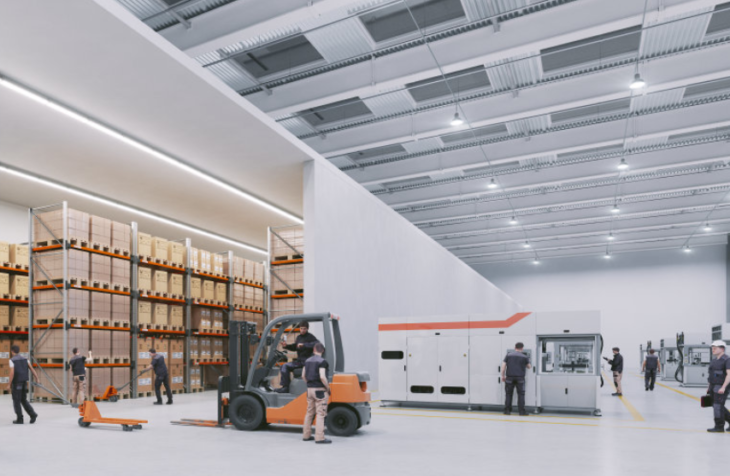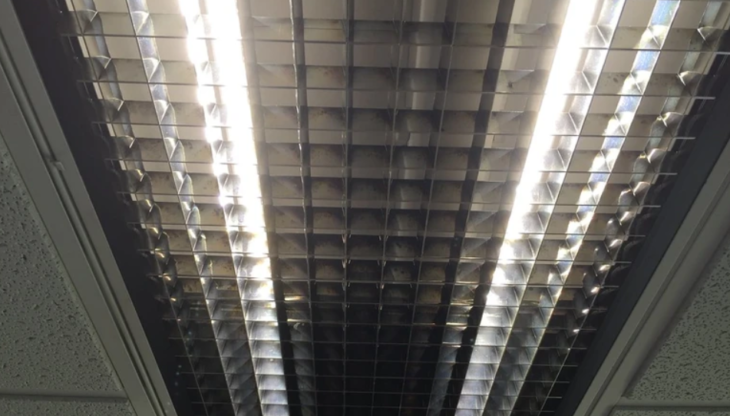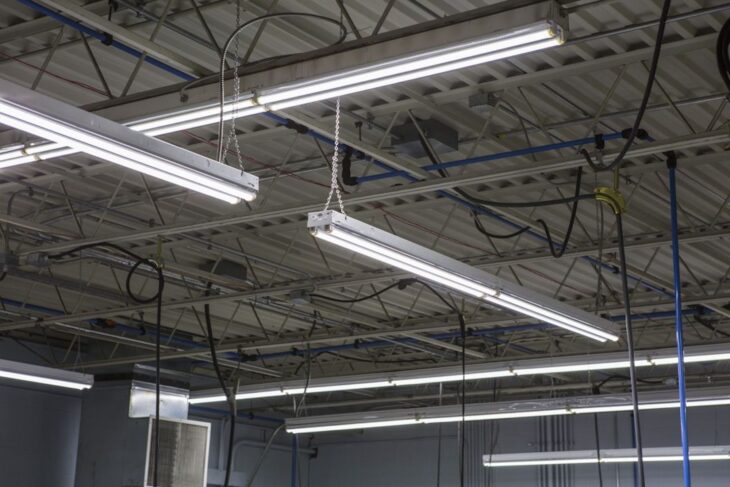Most of the production houses have warehouses to store their raw materials, equipment and other inventories. These warehouses require proper lighting systems, so that the employees can easily locate the stored items quickly and efficiently.
It is important to have a proper plan for setting up the lighting system for big sized warehouses. Proper illumination is the most important requirement of every warehouse, irrespective of their size.
Nowadays, LED lighting is mostly preferred choice for lighting our homes, industries, shopping centres, hotels, hospitals, etc. They also make the best option for warehouses too. The LED systems not only offer good efficient illumination. Their power consumption is quite low when compared to all other kinds of lights available.
Contents
Warehouse lighting
You might have a few questions about installing the lighting system at your warehouse. In this post, we have tried to address a few of them to help you make the right choices.

Source: Concept Storage Solutions
What kind of light source to be used?
There are 3 popular options for selecting your light source:
- HID lamps
- Fluorescent lamps
- LED lights
If you check the various pros and cons of all the options, you will see that LED lights are the easily most suitable choice for any warehouse. You can visit LEDLightExpert.com to learn about the guidelines to make the right choices, based on the size of your warehouse.
The following are the few reasons why LED lighting can be the best option for any warehouses:
- Cost – Prices of the LED lights are usually much lower when compared to older types. So, you can make substantial savings by choosing them for your warehouse.
- Energy savings – As already mentioned above, LED lights consume minimal power when compared to halogen lamps or fluorescent lights, However, the illumination of LEDs is not any lesser than what you get with those types. That means you will be saving more money in the long run on power bills.
- Classy and attractive – LED lights are available in all different innovative styles and sizes. You can find them with both, modern and classic styles, which offer a good aesthetic value to your warehouse.
- Ease of installation – LED lights are quite compact with simplified wiring systems. Installation of these lights is easier and much cost effective, when compared to the older types.
- Safety – Since LEDs does not produce harmful UV light, they can be considered as the safest lighting available in the market. Also, mercury isn’t used for making the LEDs.
- Lower maintenance – Most of the traditional bulbs will have to be replaced after every few months. LED lights are designed to last for a long time, which means you save money on replacements and maintenance.

Source: osram
How much of brightness is required?
As far as the illumination is concerned, you will first need to consider the color ceiling and walls, as they make a big difference. Ceilings and walls with a lighter color will have higher reflectance, as compared to dark colors.
If the warehouse has skylights, then lower Lumen output will not be enough. You may however need to switch to low output fixtures for the sunny days. You can do it this by wiring both types with separate switches during installation.
What should be the color temperature of the lights?
While deciding on light fixtures, another important parameter to consider is the color temperature. It can make a big impact not only on visibility but also on productivity too.
Color temperatures should be 4000K to 5000K, which will be the best choice for most of the warehouses. The color temperature within this range will emit cool white, and often seen as having a bluish tint. This range helps to reduce the strain on the eyes, and creates a good environment for doing productive work.

Source: lighting
Planning the light distribution?
While installing the LED lights for warehouses, you will need to plan the light distribution accurately, as per specific lighting requirements. The light distributions can be either to V-type or the I-type.
While V-type is ideal for open warehouses with more space, I-type produces direct focus on a certain spot. I-type is ideal for pointing lights in the upward direction. If there are many tall shelves then you might have to use this distribution system for those spots. On the other hand the V-type illuminates a wide range of area.
Planning on the positioning of fixtures?
Another important factor to consider while lighting up your warehouse is the distance between the fixtures. Closely positioned light sources can cause blind spots and glares, especially in the areas where 2 or more beams overlap or intersect with each other.
On the other hand, if you position them too far apart, then you will get dark areas. So, ensure where you position them optimally while installing. If you are not too sure about it, then you must consult lighting specialists.
What kind of fixtures will make the most sense?
Typically most warehouses will have either “low-bay” fixtures or “high-bay” fixtures. Ceilings having a height less than 20 feet will need low-bay fixtures, so that it can spread out the illumination.
High bay fixtures will be suitable for ceilings with 20 to 45 feet high so that they can send more amount of direct light to the floor. LED fixtures are made durable to sustain the harsh conditions of warehouses.

Source: warehouse
Will you need anything more?
Your warehouse lighting can have the movement sensors that measure the vacancy or occupancy inside the building. Such motion sensors when integrated with your lighting design may help in reducing wastage of energy cost by 30%. These sensors will turn-on or switch-off the lights, based on the presence of the absence of people in the space.
Vacancy sensors will be for areas, which require lights only if someone enters. If needed, you can switch off the sensors to keep the lights turned on, even when the space remains empty.
We hope that all the information provided above will help you to design and install the perfect lighting for your warehouse. Nowadays, most of the older warehouses are also replacing all their old lightings with LED lightings.
